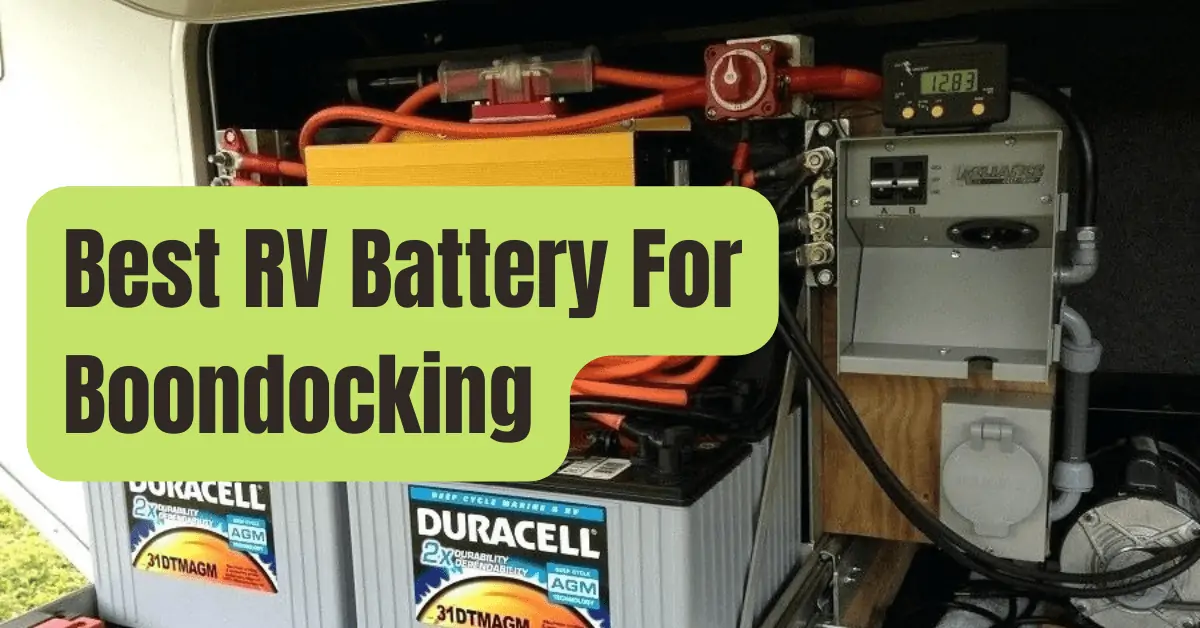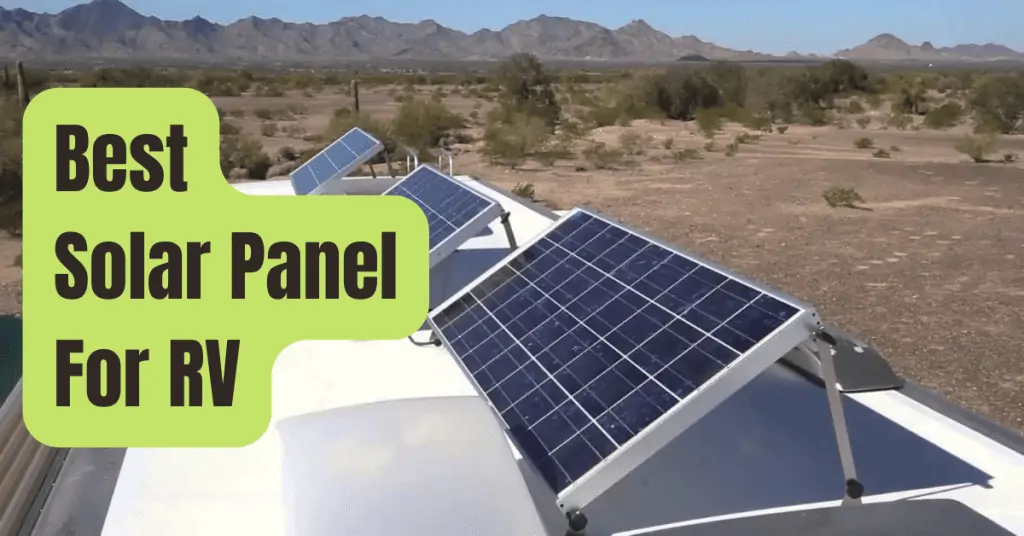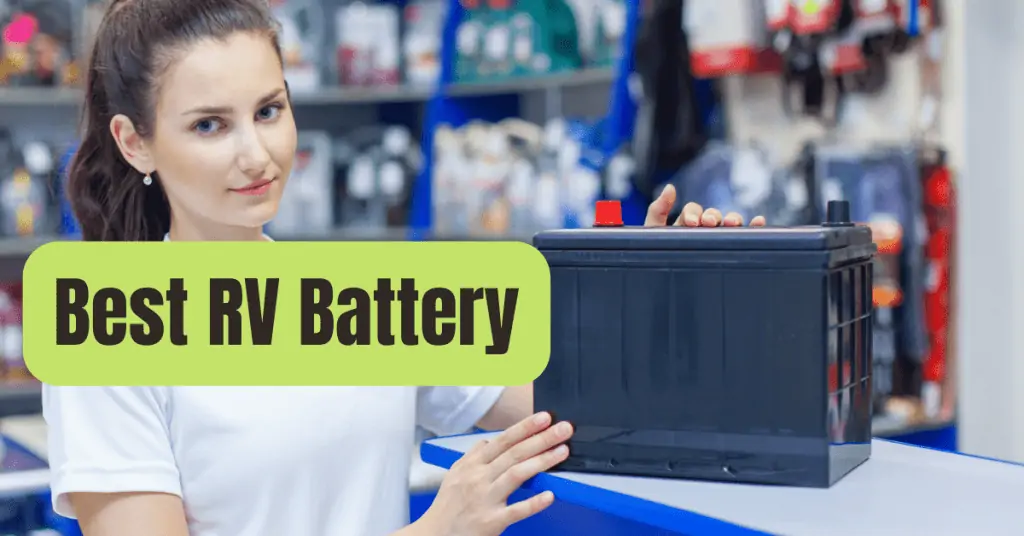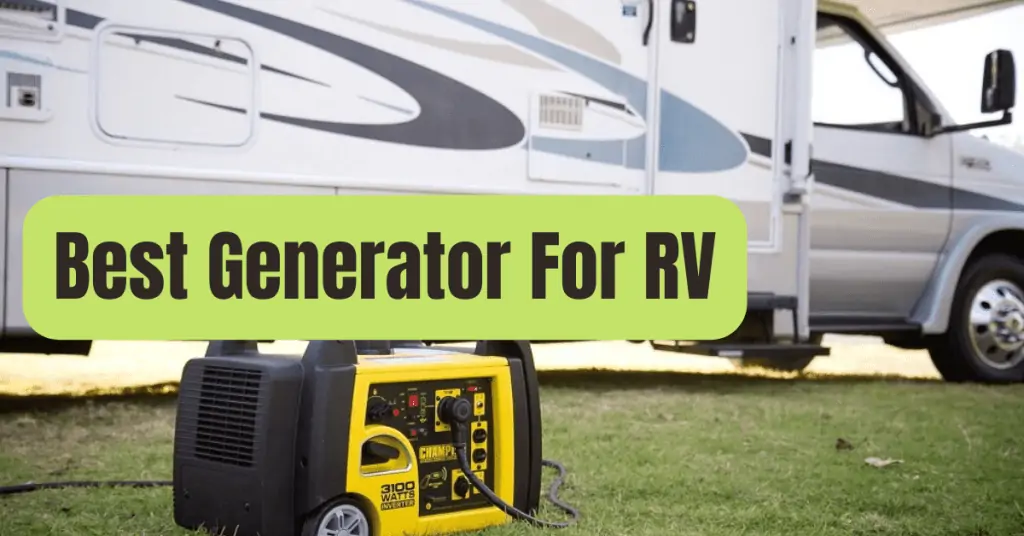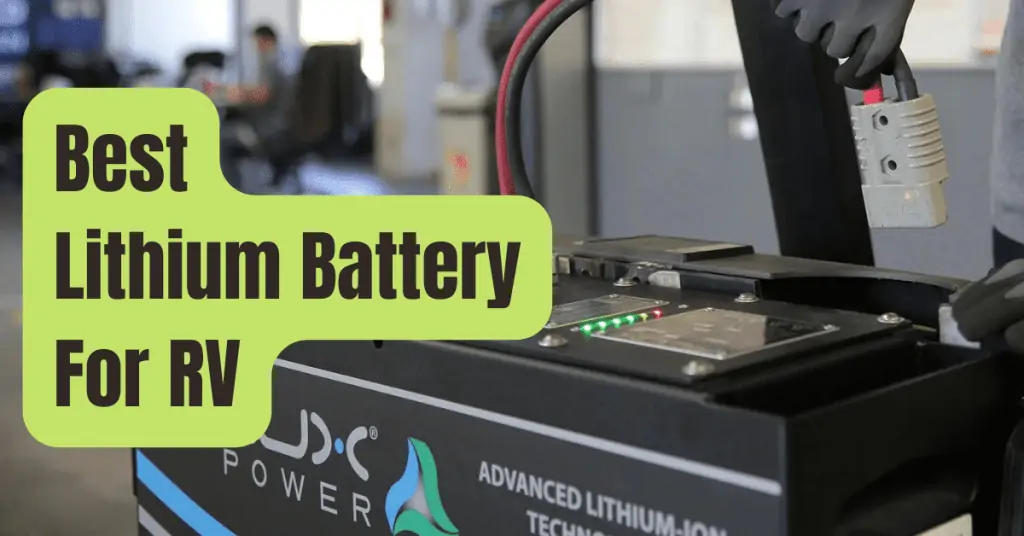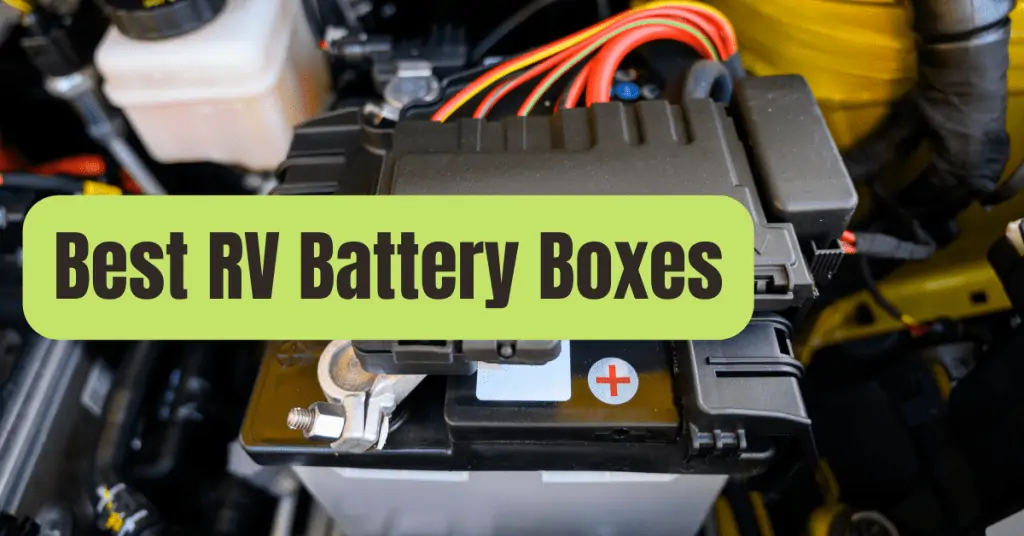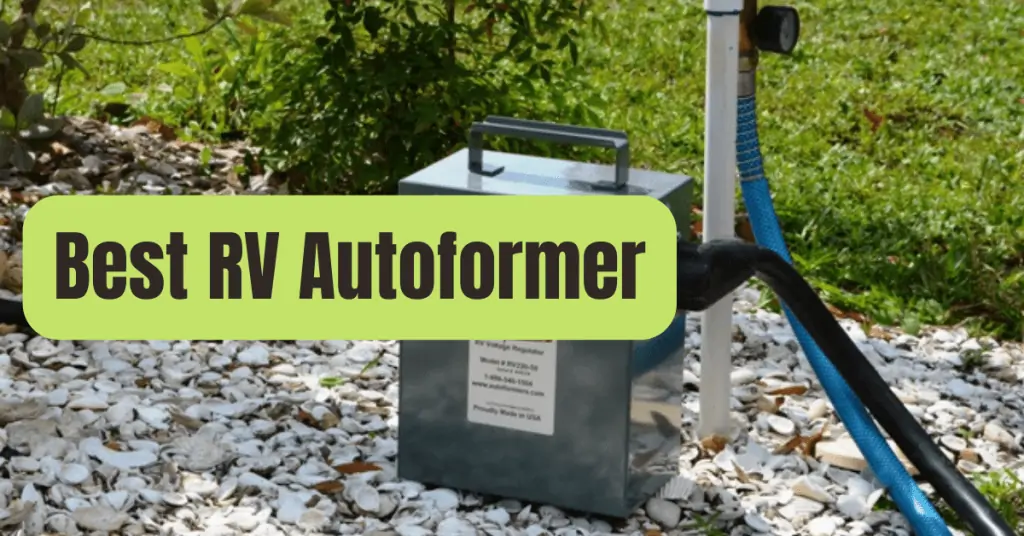We’ve never been bashful about expressing our affection for boondocking.
It’s by far our favorite method to camp, and we’ve always encouraged others to give it a go.
The lack of electricity is one of the key reasons why many people are put off by the thought of boondocking.
We understand since we’re also major power users.
However, with a good home battery system (which is different for everyone), you can camp off the grid with plenty of electricity.
So, in today’s article, we’ll speak about the best RV battery for boondocking, which is the heart of any decent off-grid power system.
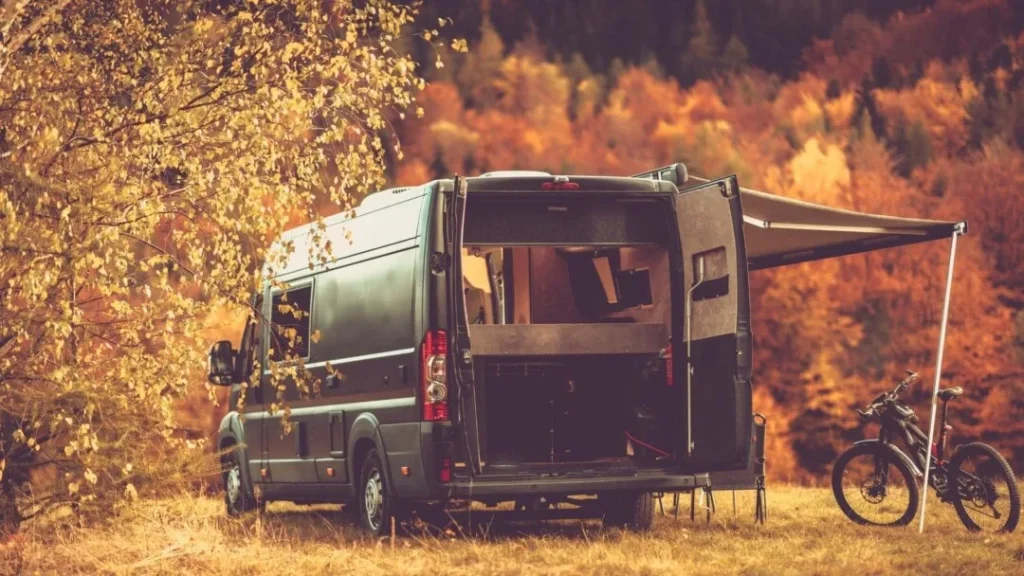
What Is The Definition Of Boondocking?
For those who aren’t acquainted with boondocking, it’s best described as camping off the grid.
This means you won’t have access to facilities like shore power for your electrical requirements or municipal water and sewage, as you would at a traditional campsite or RV park.
Camping is excellent because you have all the electricity you need, plenty of water for bathing, and you can use anything from a microwave oven to air conditioners, electric heaters, coffee pots, and blow dryers without having to worry about power or water conservation.
If your trailer has them, you can even use them to operate a washing and dryer.
However, there are off-grid camping spots that provide a different kind of power and even more fantastic facilities, such as the power of being in nature, where the only sounds are birds, crickets, loons, and coyotes.
Magical landscapes as far as the eye can see are among the amenities.
Waking up near to the beach or a lake, sipping your coffee while watching the sun rise and listening to the waves lapping the shore.
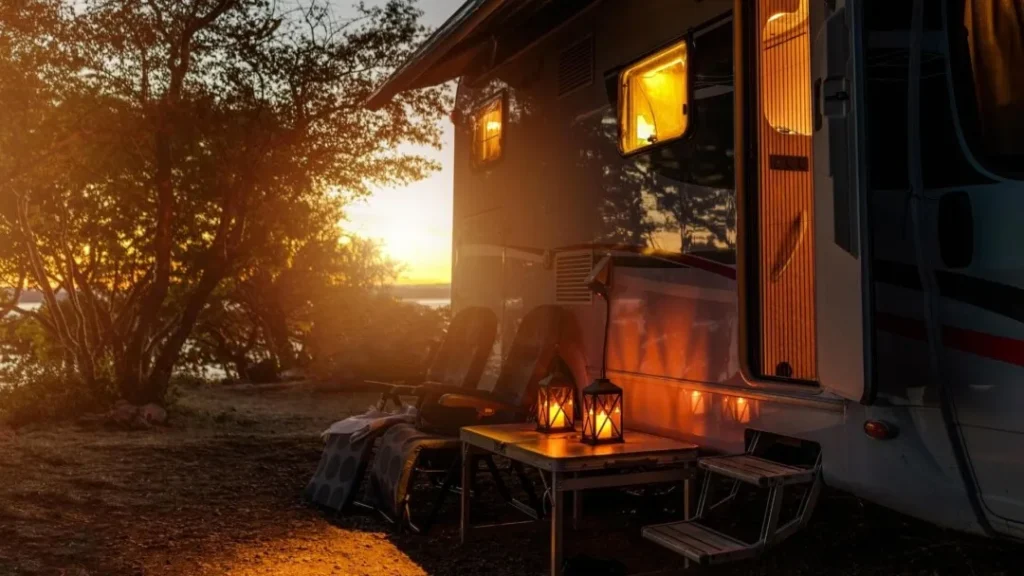
There’s nothing quite like having nature right in your living room.
Commercial campgrounds can’t compare to the experiences offered by boondocking.
However, if you need to use a computer or tablet for work, or if you can’t live without your beloved electric coffee maker, or if the summer heat is oppressive, you’ll have concerns about how to power the items you need when off the grid.
So, now that we’ve established what boondocking is, let’s look at the best batteries for boondocking to provide you with the power you’ll need to spend a night or ten in the middle of nowhere.
What Are the Different Types of Boondocking Batteries?
Let’s have a look at the many kinds of house batteries available for RVers before we get into what is the best RV battery for boondocking.
They aren’t all the same, and they all work and operate in various ways.
The ideal RV battery for you and your boondocking requirements is determined by a number of criteria (not the least of which is budget, as is always true for all of us).
#1. Batteries Made With Lithium (Lithium Iron Phosphate)
The lithium battery is the gold standard for RV boondocking with sun as your energy source.
Lithium batteries have attained this prestigious reputation due to their superior performance in everyday usage for a variety of reasons:
- They are less heavy than other forms of batteries.
- Temperature has less of an impact on them (so they perform more consistently in both warm and cold climates).
- They don’t need to be maintained on a regular basis.
- They charge more quickly because there is less impediment to charging… They don’t need the three-stage charging cycle that lead-acid batteries need to overcome charging impedance.
- They provide you more bang for your buck since they may be drained completely without causing harm. The amount of power that can be pulled from all types of lead-acid batteries (flooded, AGM, and gel) without harming them is limited… generally to 50 percent of their capacity. This is not a problem with lithium batteries.
- They don’t have to be charged completely. In order to correctly and thoroughly return the sulfur that has collected on the lead plates back into solution, lead-acid batteries must be recharged 100 percent on a regular basis. Failure to do so may result in the batteries’ capacity and lifetime being reduced. This is not a prerequisite for lithium.
- Because they don’t emit hydrogen while charging like flooded lead-acid batteries, they don’t need to be put in outside or vented compartments, allowing for more location options.
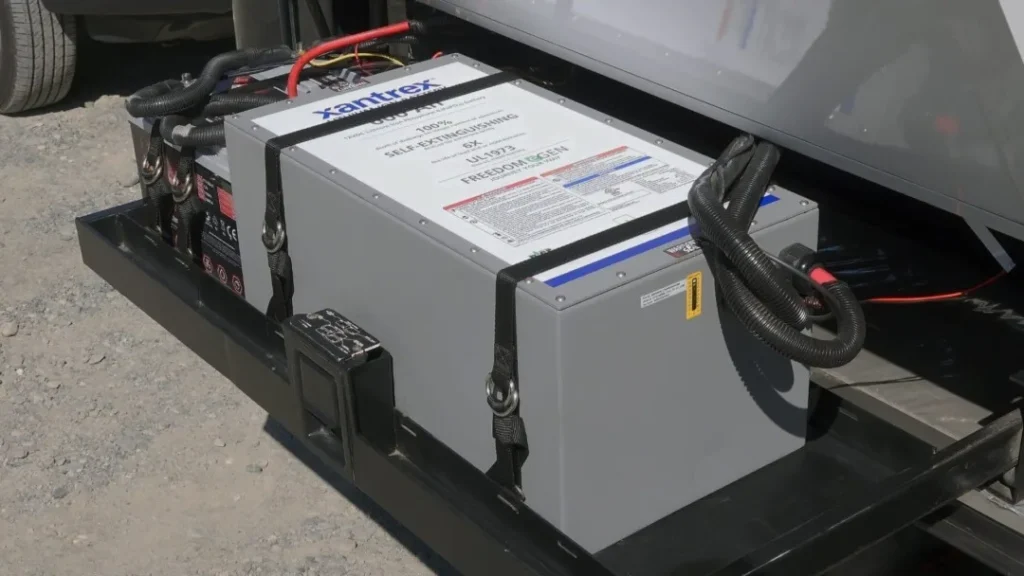
We have a 600Ah Xantrex Freedom eGen lithium battery that fits with our 1,300W solar system.
Xantrex, on the other hand, produces 12V lithium drop-in batteries.
Lithium batteries are safe for two reasons in particular.
First, both thermally and chemically, the Lithium-Iron-Phosphate (LiFePO4) chemistry is exceedingly stable.
In the case of a mishandling, this makes them tough to ignite (especially during charging).
Second, they’re usually equipped with built-in battery management systems (BMS) that appropriately govern the charging and discharging operations to keep them within safe limits.
The initial expense of lithium batteries is the only major disadvantage.
They’re costly to buy, but once you do, they’ll likely outperform any other battery you could install for a far longer period of time.
However, they do need a large sum of money up advance.
So, let’s look at some alternative, more cost-effective solutions.
#2. Gel
The next most costly RV house batteries are gel batteries.
A gel battery is maintenance-free since it is self-contained.
Gel batteries contain electrolytes that are similar to those found in flooded lead-acid batteries, however unlike flooded lead-acid batteries, there are no liquids to maintain (or spill) in gel batteries.
Gel batteries have long been favored by serious off-roaders because to their ruggedness and durability, as well as their resistance to extreme heat and cold.
The disadvantages of gel batteries are that they are somewhat costly and that they are not as efficient in terms of charging as other batteries.
They have a lengthy charging period and are quite sensitive to the charging process.
Plus, like other lead-acid chemistry batteries, its usable power is limited to 50%…
As a result, a 100Ah battery can only provide 50Ah before it has to be recharged.
#3. AGM
AGM (absorbed glass mat) batteries are completely enclosed lead-acid batteries.
The term “AGM” basically indicates that the liquid within the batteries is absorbed by glass mats, which means that no liquid can leak out regardless of how the battery is positioned, and it’s also maintenance-free since you don’t have to check and top up liquid contained in the cells (unlike a typical flood lead-acid battery).
AGM batteries, which are less costly than both lithium and gel batteries, are highly efficient, can withstand extreme temperatures, have a low discharge rate, and are less expensive to acquire than lithium batteries.
However, since their usable power is limited to 50%, they need twice as many AGM batteries to match lithium’s power capacity.
Because they’re totally enclosed, AGM batteries don’t emit hydrogen and can be installed inside a vehicle, which is one of the reasons they’ve been popular among RVers and van builders for years.
#4. Flooded Lead-Acid Batteries
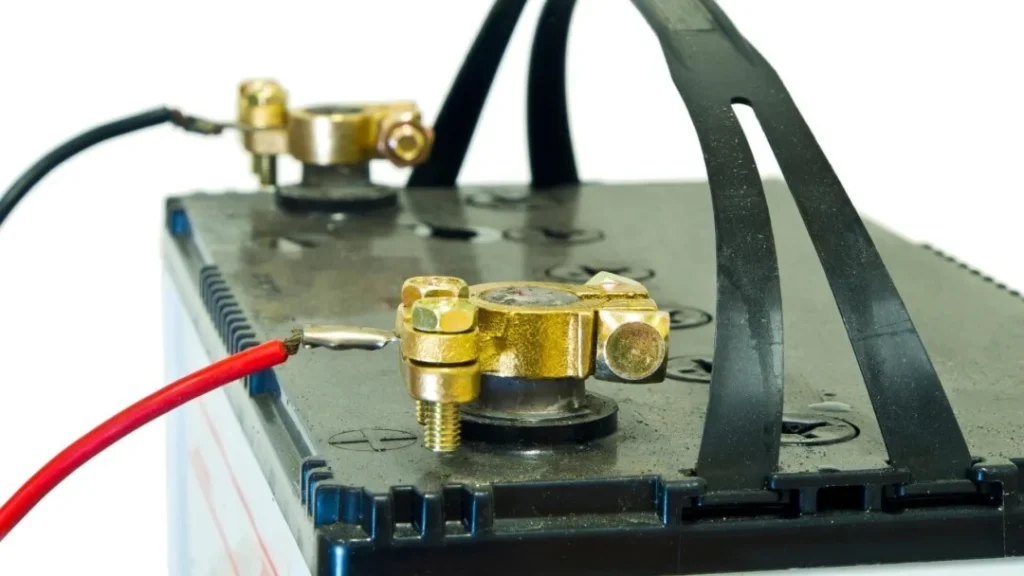
The flooded lead-acid battery is the most cost-effective boondocking battery.
These will work perfectly for powering your RV, but they do have a few drawbacks.
The least priced RV batteries are usually flooded lead-acid batteries.
They do, however, need venting since they off-gas hydrogen while charging (posing an explosion threat), they require periodic maintenance (such as topping up the electrolyte solution in their cells), and they are limited to 50% capacity like other lead-acid batteries.
If you don’t boondock often or for lengthy periods of time (weekend campers, for example), flooded lead-acid batteries provide the greatest bang for your money, giving the least costly power possible in an RV house battery, and are likely the ideal RV battery for boondocking for you!
It’s worth noting, though, that flooded lead-acid batteries are hefty and, in addition to needing venting and maintenance, aren’t tolerant of severe temperatures.
If you leave a lead-acid home battery in your rig throughout the winter in an area where cold temperatures are common, for example, you’ll have to purchase a new house battery in the spring.
On the other side, if you take your flooded lead-acid batteries from the rig and store them correctly while it’s in winter storage, they’ll last a long time.
What Is The Best Battery Setup For A Recreational Vehicle?
As previously said, lithium-ion batteries have quickly become the gold standard for delivering electricity to an RV, and are often mentioned as the “best RV battery for boondocking,” but there’s no denying that they’re pricey, and therefore may not be the best option for YOU.
AGM or 6-volt deep cycle lead-acid batteries may also work well in this application if lithium batteries are too expensive.
Should 6V Golf Cart Batteries Be Connected in Series or Parallel?
If you pick 6V deep cycle (golf cart) batteries as the finest RV battery for boondocking, you have the option of connecting two or more in series or parallel.
But before, here’s what you should know:
Wiring in series entails connecting the + and – terminals (positive to negative).
This sums the voltages of the two batteries together, but not their capacity.
As a result, two 105Ah 6V batteries connected in series equal one bigger 12V battery…
Even when combined, though, the capacity is just 105Ah.
Parallel wiring connects + to + (positive to positive) and – to – (negative to negative), combining the capacity of the batteries but not the voltage.
Two 105Ah 6V batteries are connected in parallel to form a bigger 6V battery with a capacity of 210Ah.
This is why many RVs have a bank of four 6V batteries connected.
They’re connected in a series-parallel configuration, which means two batteries are wired in series to make one bigger 12V battery, then that pair is hooked in parallel to the second pair (which are also wired in parallel) to enhance the battery bank’s overall amp-hour capacity.
For Boondocking, How Many Amp Hours Do I Require?

You can get away with a tiny battery bank if you just camp off the grid for a few of days at a time and all you need to power is your RV lights (particularly if they’re LEDs! ), a vent fan, and a few electronics.
This is a difficult issue for us to answer since it relies on your power use during the course of your boondocking trip, as well as the amount of batteries you’ll have and how you plan to charge them.
To give you an example, we work full-time from our RV.
We have to consume a lot of electricity simply to do our jobs, therefore we have to utilize a lot of it.
This is because, as you may have noted in our most recent piece on the upgrade of our tech cabinet in 2021, we operate a lot of technology around the clock.
We also have a big rig, a Class A diesel pusher with a lot of equipment, including a rather power-hungry domestic refrigerator that necessitates running our inverter 24 hours a day, 7 days a week.
While we’re boondocking, we don’t use many of our other appliances.
We preserve energy to the extent feasible while continuing to work full-time from our rig parked in the middle of nowhere, operating a few companies.
Our Complete Guide to Class A RV Boondocking has further information on how we do it.
We also have 1,300 watts of solar on our roof, with auto-tilting systems to maximize the sun’s energy.
If, on the other hand, you’re going on a weekend boondocking trip and all you need to do is power your LED RV lights, your rig’s water pump, your roof vent fan to keep things cool, keep your phones and tablets charged, and watch a little streaming television before bed, then a couple of flooded lead-acid house batteries should suffice.
Would you need solar power? No.
Certainly not.
You could absolutely keep your batteries charged with a 100-200W solar panel, but if you don’t have solar, you could charge them while driving or use your generator for a short period of time – maybe timing it so you can use your microwave to boil up a lunch while you charge your batteries.
All of this is to say that the number of amp-hours you need when boondocking is dependent on a number of variables, and no two campers are same.
Our best advise is to tally up how many amp hours you’d use in a day and proceed from there.
If you can afford it, even a single solar panel (you don’t have to install it; you can purchase a portable solar panel) can assist keep your batteries charged and everything you need to power running when boondocking.
As usual, we recommend setting up camp in a campground and staying there off the grid to get acclimated to boondocking while having a backup plan in case you need it.
How Can I Charge The Batteries In My RV’s House?
You may charge your finest RV battery for boondocking in a variety of methods, regardless of whatever model you choose:
- Solar panels may help you save money (portable or installed)
- By starting up your generator (built-in or portable)
- By driving your RV and enabling the batteries to charge via the alternator on your engine.
- Alternatively, you may connect your RV to shore electricity at an RV park or campsite.
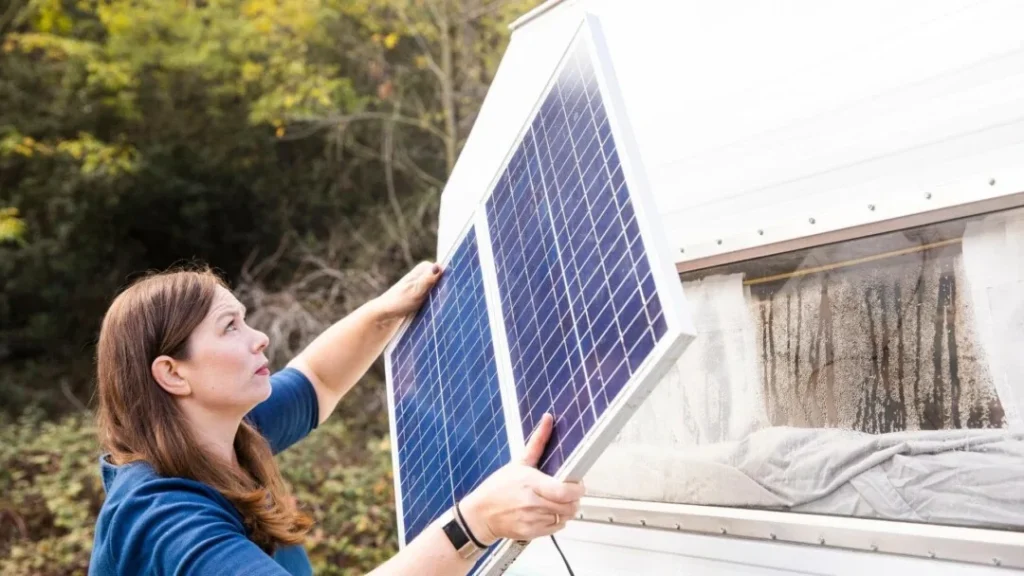
Solar is an excellent method to keep your batteries charged if you can afford even a modest solar panel.
You may either install one or two or purchase a portable solar panel and place it in the sun while camping.
What to Look for in the Best Boondocking RV Battery
Let’s take a look at a few things to think about while buying for boondocking RV batteries.
#1. Voltage
6V or 12V batteries are the most common voltage ratings for RV batteries.
Because 12V batteries are bigger, many RVers have been able to boondock with only a single 12V battery.
In reality, many Class B RVs used to be built with a single 12V house battery.
As power demands have expanded over time, many RVs now have at least two 12V batteries plugged into their systems.
More than one 12V battery can be linked together, but they are enormous and heavy, and if your rig wasn’t built to accept two 12V batteries, you’d have to make sure they fit.
Many RVers choose to connect two 6V (golf cart) batteries together to achieve the voltage requirements (12V) of an RV and meet their power requirements.
The benefit of doing so is that 6V batteries have bigger, thicker lead plates, which can resist the strains of the discharge-recharge cycle.
This is why they’re referred to as “deep cycle batteries” in the industry.
When you connect them in series to produce a single bigger 12V battery, you get a longer life under heavy usage.
#2. Capacity
Another factor to consider while looking for the finest RV battery for boondocking is capacity.
The quantity of energy – or the number of amps – a battery can deliver before its capacity is diminished to the point where it has to be recharged is referred to as its capacity.
When you see the term Ah (amp-hours), it refers to the amount of power a battery can provide to your electrical equipment.
The standard rating for deep-cycle batteries is determined by the number of amps that may be drawn from the battery over a 20-hour period.
So, if the battery is rated at 100 Ah, you may draw power from it for 20 hours and it will deliver a total of 100 amp hours of electricity.
This is around 5 amps (5A x 20 hours = 100Ah).
We discussed how vital it is to find out what appliances and equipment are necessary for you to be able to utilize during a day of camping in the part asking how many amp-hours a camper would require for boondocking.
This is what battery capacity is all about – the more capacity you have, the more appliances and gadgets you can operate (or the longer you can run them).
Always plan for a higher battery capacity than you think you’ll need.
#3. Rate of Discharge
The pace at which your RV’s electrical equipment take power from the battery is referred to as the discharge rate.
When it comes to discharge rates, batteries come in a variety of capacities.
Furthermore, the pace at which you drain your batteries might have an impact on their ability to provide the specified capacity.
Peukert’s Law indicates that the connection between the total duration of discharge and the applied load is not linear for lead-acid batteries (flooded, AGM, and gel).
This implies that when your load grows (i.e. you use more amps), your battery’s realized capacity falls (i.e. you obtain fewer amp-hours of electricity).
When evaluating the capacity of a battery, manufacturers utilize a 20-hour rating for uniformity.
If you employ a 5-amp load (5A x 20h = 100Ah), a battery with a 100 Ah capacity will give the specified amount of power.
Because of Peukert’s rule, a 100 Ah battery discharged by pulling 100 amps of load will not offer one hour of runtime.
Watch the video below for a more in-depth presentation of everything:
Lithium batteries are less influenced by Peukert’s Law and may therefore provide the majority of their claimed capacity even when exposed to increased loads.
What Are the Best Boondocking RV Batteries?
As previously said, a variety of considerations will decide which RV battery is ideal for boondocking… for you! Let’s take a look at some of the greatest brands and types of boondocking RV batteries currently available.
IMPORTANT NOTE: Before switching from one battery type to another (especially from any lead-acid battery to lithium), be sure that all of your charging-related system components are compatible with the new battery type.
You may also need to update other components (converter/charger, inverter/charger solar charge controller(s), chassis battery charge combiner/maintainer, etc.).
You risk harming the replacement battery if you don’t (ies).
#1. Battle Born LiFePO4 Deep Cycle Battery

Battle Born swiftly acquired a reputation as a high-quality lithium-ion battery producer in the RV sector.
These batteries are pricey, but they’re efficient, long-lasting, and sturdy.
Battle Born batteries charge fast and effectively, are lightweight, and come with a 10-year guarantee from Battle Born.
When you consider how many flooded lead-acid batteries you’d have to purchase over a 10-year period to equal the Battle Born LiFePO4 deep cycle battery’s power output and efficient recharging, the price shock of the Battle Born battery fades rapidly.
They may be ordered straight from Battleborn’s website or via Amazon:
Battle Born Batteries
The brain of our deep cycle lithium batteries is the BMS (Battery Management System).
Our battery management system (BMS) protects your battery from the majority of…
Battle Born’s deep cycle lithium ion batteries, unlike lead acid batteries, offer a limitless mounting capability, excellent…
Battle Born Batteries LiFePO4 Deep Cycle Battery – 100Ah 12v with Built-In BMS – 3000-5000 Deep Cycle Rechargeable Battery – Perfect for RV/Camper, Marine, Overland/Van, and Off Grid Applications
- BUILT-IN BMS: BMS stands for “Battery Management System” – the brain of our deep cycle lithium batteries. Our BMS protects your battery from most…
- LITHIUM ION TECHNOLOGY: Unlike Lead Acid batteries, Battle Born’s deep cycle lithium ion batteries have unlimited mounting capability, exceptional…
#2. Xantrex 12V Lithium-Ion Battery
Xantrex, a long-time industry leader, provides 12V drop-in lithium-ion batteries in a variety of capacities.
The Group 27 size has a capacity of 105Ah, whereas the somewhat larger Group 31 has a capacity of 125Ah.
(Xantrex also offers much bigger capacity batteries, like as the eGen one we use in our RV, but they’re also considerably larger in size.)
These 105Ah and 125Ah 12V drop-in batteries may be stacked four times in parallel to form a significantly greater capacity (Ah) system that may fit in your RV’s battery bay.
They include Bluetooth connection, allowing you to check their status through the Xantrex app on your smartphone, a (optional) remote panel for monitoring/controlling them, and internal heating, allowing them to be charged in frigid temperatures.
The batteries are IP65 certified and tested to the UL 458 vibration standard for maritime applications, ensuring that they can survive the bouncing that an RV generates, even while traveling through rough terrain.
#3. Fullriver 6V AGM Battery

Fullriver Group produces a highly rated 6V 224Ah AGM sealed lead-acid battery.
If required, this completely sealed, maintenance-free 6V battery may be put on its side… However, to create the 12V your RV would need, it must be linked in series with a second battery at 6V.
Fullriver’s 6V AGM batteries come with a 5-year guarantee that includes free replacement for the first 24 months and prorated replacement for the remaining 36 months.
Fullriver Group GC2 6V 224Ah T-105 AGM Sealed Lead Acid Battery
- AGM 6 Volt Deep Cycle
- BCI GROUP GC2 Maintenance-Free Battery
#4. Optima OPT8016-103 Batteries D34M BlueTop Starting and Deep Cycle Marine Battery

The Optima Blue Top deep cycle marine battery is a less priced but still high-quality battery for RV boondocking.
This battery has a capacity of 55Ah, which is obviously smaller than the three previously suggested batteries, but Optima has a long-standing reputation for high-quality, long-lasting batteries, and it may fit your application for a lot less money than the others.
The Optima Blue Top is a little but powerful battery that weighs 43 pounds, is spill-proof, requires no maintenance, and can be put in almost any location.
Because of its high vibration resistance, it’s ideal (and popular) for maritime and RV applications.
Optima OPT8016-103 Batteries D34M BlueTop Starting and Deep Cycle Marine Battery
- 12-Volt, 750 Cold Cranking Amps, Size: 10 inches x 6 7/8 inches x 7 13/16 inches tall, Weight: 43.5 pounds, Dual SAE & 5/16 inches Stainless Steel…
- Even in poor weather, optimal starting power
#5. VMAX XTR6-235 6Volt 235ah AGM Golf Cart Battery
This VMAX 6V battery has a 235Ah capacity and is known for being efficient and long-lasting.
It’s a big battery, weighing in at 78 pounds (no, that’s not a mistake — this 6V battery is 78 pounds).
These batteries may be paired (in series to make 12V) or quadrupled (series-parallel) for a very big capacity of dependable battery power provided you have the room and the cash, and your setup can safely withstand the weight.
VMAX XTR6-235 6Volt 235ah Golf Cart Battery AGM GC-2 Replacement Compatible with DEKA GC10
- Capacity: 235Ah; 6 Volts, 78lbs, Energy: 1.62kWH; Reserve Capacity: 500min; Dimensions: 10.2″L x 7.1″W x 10.2″H (10.8″H including terminal posts)
- Superior Military Grade Alloys. Maintenance free.
#6. Trojan T-105 GC2 6V Deep Cycle Flooded Lead Acid Battery
Finally, the T-105 6V deep-cycle flooded lead-acid battery from Trojan is widely regarded as the finest flooded lead-acid battery available.
Each T-105 6V battery has a capacity of 225Ah, and when connected in series with another Trojan T-105, should provide ample of power for boondocking for most RVers seeking for a high-quality flooded lead-acid alternative.
It’s worth noting that each Trojan T-105 is 64 pounds.
We’d be remiss if we didn’t point out that, although we’ve included an Amazon link for the Trojan T-105, Amazon’s pricing is too expensive for this battery, so if you’re interested in Trojan batteries, you may want to check into other possibilities.
Trojan T-105 GC2 6V 225Ah Deep Cycle Flooded Lead Acid Battery
- Voltage: 6, Amperage: 225mAh, Chemistry: Flooded
- Length: 10.370, Width: 7.120, Height: 10.870
Take Advantage of Your Off-Grid Camping Experience
Boondocking is an adventure that you should attempt at least once.
The vast majority of folks who attempt boondocking love it.
Give boondocking a try, regardless of how you power your RV – even if you just have a single house battery or a modest solar generator – and enjoy your time camping off the grid!

